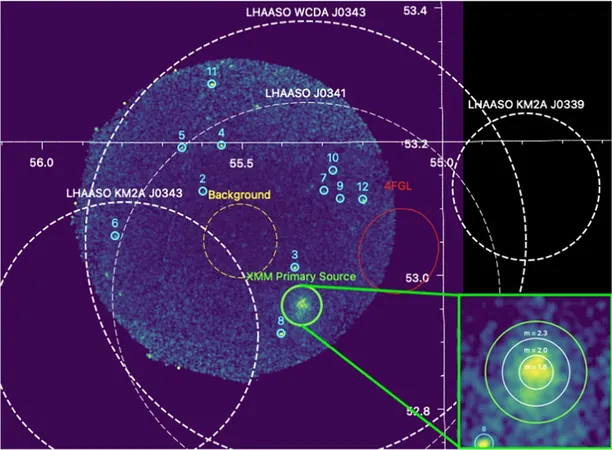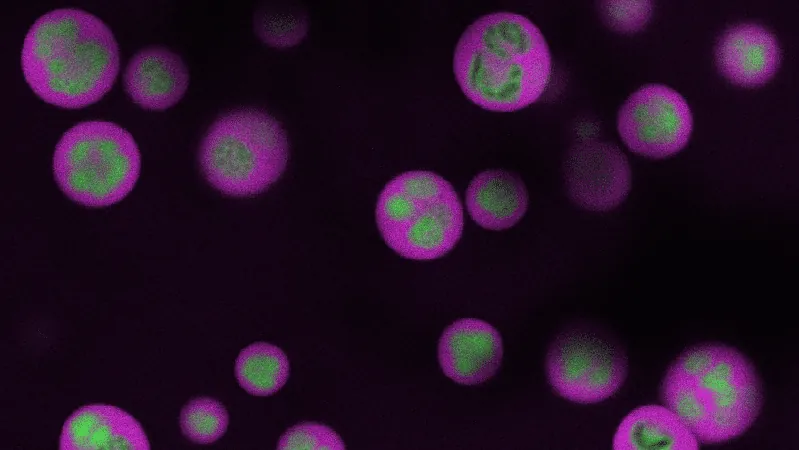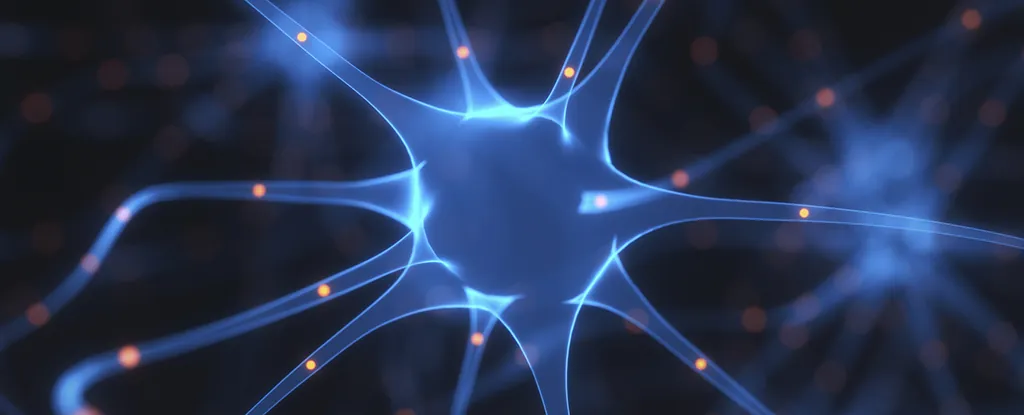
Unveiling the Cosmic Ray Mystery: Astronomers Zero In on Galactic Sources
2025-06-17
Author: Liam
The Cosmic Ray Hunt Begins!
In 1912, astronomer Victor Hess stumbled upon a phenomenal discovery: high-energy particles known as "cosmic rays." Fast forward over a century, and these enigmatic particles continue to puzzle scientists as they unravel their origins. While we’ve identified some cosmic ray launch pads—from the Sun to supernova blasts and even black holes—today's cosmic detectives are turning their attention to the Milky Way Galaxy itself.
Pulsar Wind Nebula: A Leading Contender
At a recent American Astronomical Society meeting, astronomers led by Zhuo Zhang from Michigan State University presented groundbreaking findings suggesting that pulsar wind nebulae, particularly in our Milky Way, could be key sources of these cosmic rays. Pulsars, or rapidly spinning neutron stars birthed in supernova explosions, generate high-energy particles through intense magnetic fields interacting with the interstellar medium. One notable example? The Vela Pulsar, a shining beacon in the expanse of the galaxy.
Cosmic Rays: More Impactful Than You Think!
These high-energy particles are vital not just for our understanding of extreme cosmic events but also have earthly implications. They zip through our planet, impacting everything from lightning formation to the very DNA inside our bodies. As Zhang astutely pointed out, "About 100 trillion cosmic neutrinos from immensely distant sources pass through you every second. Wouldn’t you want to trace their origins?"
The Quest for PeVatrons
To identify cosmic ray sources in our galaxy, Zhang and his team are on the lookout for powerful particle accelerators known as PeVatrons. Their goal? To pinpoint specific X-ray and gamma-ray emitting regions that could also release cosmic rays. The research focuses keenly on a cosmic ray source named LHAASO PeVatron J0343+5254u—identified thanks to the Chinese Large High Altitude Air Shower Observatory. This pulsar wind bubble is a hotspot of high-speed electrons and positrons, marking it as a significant cosmic ray contributor.
Cutting-Edge Observations
In collaboration with undergraduates, Zhang’s team utilized NASA's Swift X-ray telescope to pinpoint emissions from potential PeVatron sources in the LHAASO data. Although four of the five sources showed no notable points of X-ray emissions, the exercise helped refine the understanding of the X-ray limits associated with cosmic ray origins.
Continuing the Cosmic Ray Search
The hunt for galactic cosmic ray sources is ongoing. By comparing findings from the IceCube Neutrino detector in Antarctica with X-ray and gamma-ray data from various observatories, Zhang’s team aims to uncover more cosmic ray origins while exploring why some sources emit neutrinos and others do not. This investigation could potentially answer profound questions about the universe’s secrets, including the dynamics of galaxy evolution and the elusive nature of dark matter.
A Legacy of Discoveries Ahead
Zhang hopes that by cataloging cosmic ray sources, their research will provide a valuable resource for future studies in particle acceleration mechanisms. As he aptly stated, "Our effort could pave the way for a comprehensive catalog of cosmic rays, serving as a legacy for future neutrino observatories and telescopes." Get ready—astronomers are on the brink of discovering answers to cosmic puzzles that could redefine our understanding of the universe!









 Brasil (PT)
Brasil (PT)
 Canada (EN)
Canada (EN)
 Chile (ES)
Chile (ES)
 Česko (CS)
Česko (CS)
 대한민국 (KO)
대한민국 (KO)
 España (ES)
España (ES)
 France (FR)
France (FR)
 Hong Kong (EN)
Hong Kong (EN)
 Italia (IT)
Italia (IT)
 日本 (JA)
日本 (JA)
 Magyarország (HU)
Magyarország (HU)
 Norge (NO)
Norge (NO)
 Polska (PL)
Polska (PL)
 Schweiz (DE)
Schweiz (DE)
 Singapore (EN)
Singapore (EN)
 Sverige (SV)
Sverige (SV)
 Suomi (FI)
Suomi (FI)
 Türkiye (TR)
Türkiye (TR)
 الإمارات العربية المتحدة (AR)
الإمارات العربية المتحدة (AR)